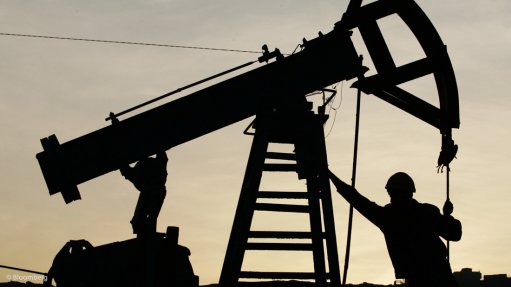Satellite-based radar could increase SA’s ability to monitor its seas
The Council for Scientific and Industrial Research’s (CSIR’s) information and communication technology (ICT) unit, the Meraka Institute, is developing a prototype maritime domain awareness system based on imagery from satellite-mounted synthetic aperture radars (SARs). Such a system would allow South Africa to monitor shipping in its exclusive economic zone and adjacent oceans, enhancing safety and making it easier to detect illegal activities.
“This is our initiative, inspired by develop- ments in the US,” explains CSIR Meraka Institute remote sensing research group senior researcher Dr Brian Salmon. “We started developing this system in late 2011. We obtained the necessary approvals from the CSIR and expressions of interest from various agencies before we started work.” The project is currently funded by the CSIR, in coopera- tion with the Institute for Maritime Technol- ogy, the South African Maritime Safety Agency and defence acquisition and research and development agency Armscor.
SAR uses the flightpath of its carrier platform – whether an aircraft or spacecraft – to electronically simulate a very large antenna or aperture. It is a coherent radar, meaning that all the pulses it transmits have defined phase angles to a reference point. SAR is also a side-looking radar, meaning that the radar beam is transmitted obliquely (from air or space to surface), at a right angle to the flightpath of its platform. The radar beam consequently illuminates a swath of the earth’s surface. SARs can achieve resolutions equivalent to those of optical imagers and can see through clouds and darkness.
“SAR allows the detection of ships not using their transponders,” highlights Salmon. “Add that to the location of the vessel and its activity pattern and that can alert the authorities to possible illegal activities, such as illegal fishing and smuggling (with larger vessels heaving to [stopping] and rendez- vousing with smaller vessels in international waters).”
Because the project is in its research and development phase, aiming at a prototype, the research team is not using live SAR data, as that would be expensive to acquire. Instead, they are using historical data retrieved from the archives of SAR imagery from two satellites, Envisat and Radarsat-2. Envisat, which is no longer operational, was a European Space Agency (ESA) satellite and mounted the Asar (advanced SAR) sensor.
Radarsat-2 is a Canadian spacecraft (a joint venture between the private sector and the Canadian Space Agency) equipped with a high-resolution SAR and, launched in 2007, is still in service.
“Whether the data is live or historical, the processing algorithms are the same,” he points out. “If we can process historical data correctly then we will be able to process live data correctly. Once perfected, the data processing of the live imagery will be very fast.”
The project is also benefiting from inputs from other units of the CSIR – Defence, Peace, Safety and Security is providing analytic research while National Resources and Environment is doing research into using SAR to determine sea state (the roughness of the sea). The sea state data would also be integrated into the system.
South Africa has long-term plans to develop or acquire a SAR satellite. “But we are expecting a significant increase in the number of SAR satellites in the next few years, especially the Sentinel series from ESA,” assures Salmon. “These will drive down the costs of imagery through increased competition.” The Sentinel-1 series will involve two SAR satellites, the first scheduled for launch this year (the Sentinel-2, -3, -4 and -5 series will use different sensors). “When both satellites are operational, Sentinel-1 will give complete coverage of the world’s whole ocean surface every six days.”
Comments
Press Office
Announcements
What's On
Subscribe to improve your user experience...
Option 1 (equivalent of R125 a month):
Receive a weekly copy of Creamer Media's Engineering News & Mining Weekly magazine
(print copy for those in South Africa and e-magazine for those outside of South Africa)
Receive daily email newsletters
Access to full search results
Access archive of magazine back copies
Access to Projects in Progress
Access to ONE Research Report of your choice in PDF format
Option 2 (equivalent of R375 a month):
All benefits from Option 1
PLUS
Access to Creamer Media's Research Channel Africa for ALL Research Reports, in PDF format, on various industrial and mining sectors
including Electricity; Water; Energy Transition; Hydrogen; Roads, Rail and Ports; Coal; Gold; Platinum; Battery Metals; etc.
Already a subscriber?
Forgotten your password?
Receive weekly copy of Creamer Media's Engineering News & Mining Weekly magazine (print copy for those in South Africa and e-magazine for those outside of South Africa)
➕
Recieve daily email newsletters
➕
Access to full search results
➕
Access archive of magazine back copies
➕
Access to Projects in Progress
➕
Access to ONE Research Report of your choice in PDF format
RESEARCH CHANNEL AFRICA
R4500 (equivalent of R375 a month)
SUBSCRIBEAll benefits from Option 1
➕
Access to Creamer Media's Research Channel Africa for ALL Research Reports on various industrial and mining sectors, in PDF format, including on:
Electricity
➕
Water
➕
Energy Transition
➕
Hydrogen
➕
Roads, Rail and Ports
➕
Coal
➕
Gold
➕
Platinum
➕
Battery Metals
➕
etc.
Receive all benefits from Option 1 or Option 2 delivered to numerous people at your company
➕
Multiple User names and Passwords for simultaneous log-ins
➕
Intranet integration access to all in your organisation


















